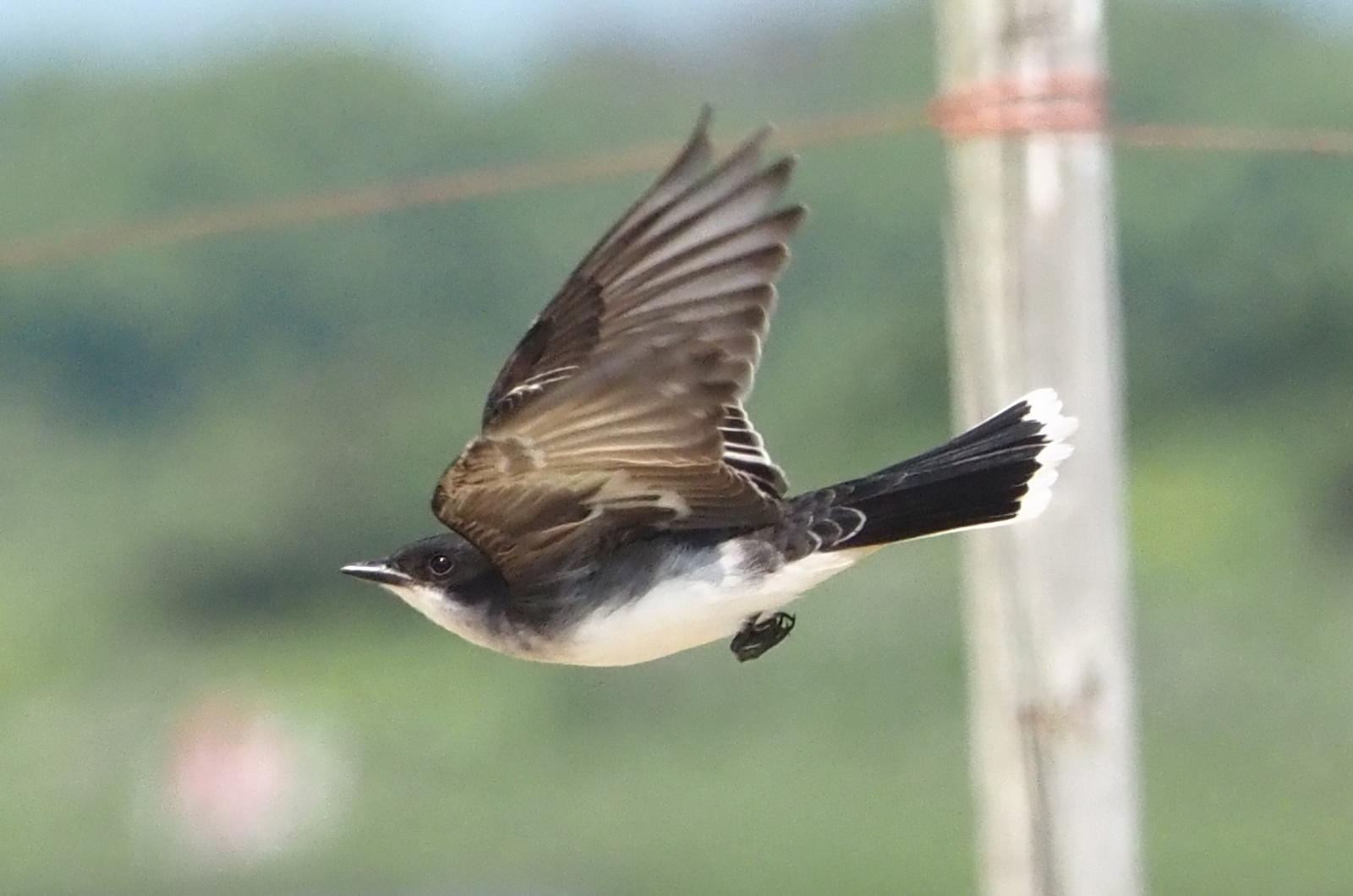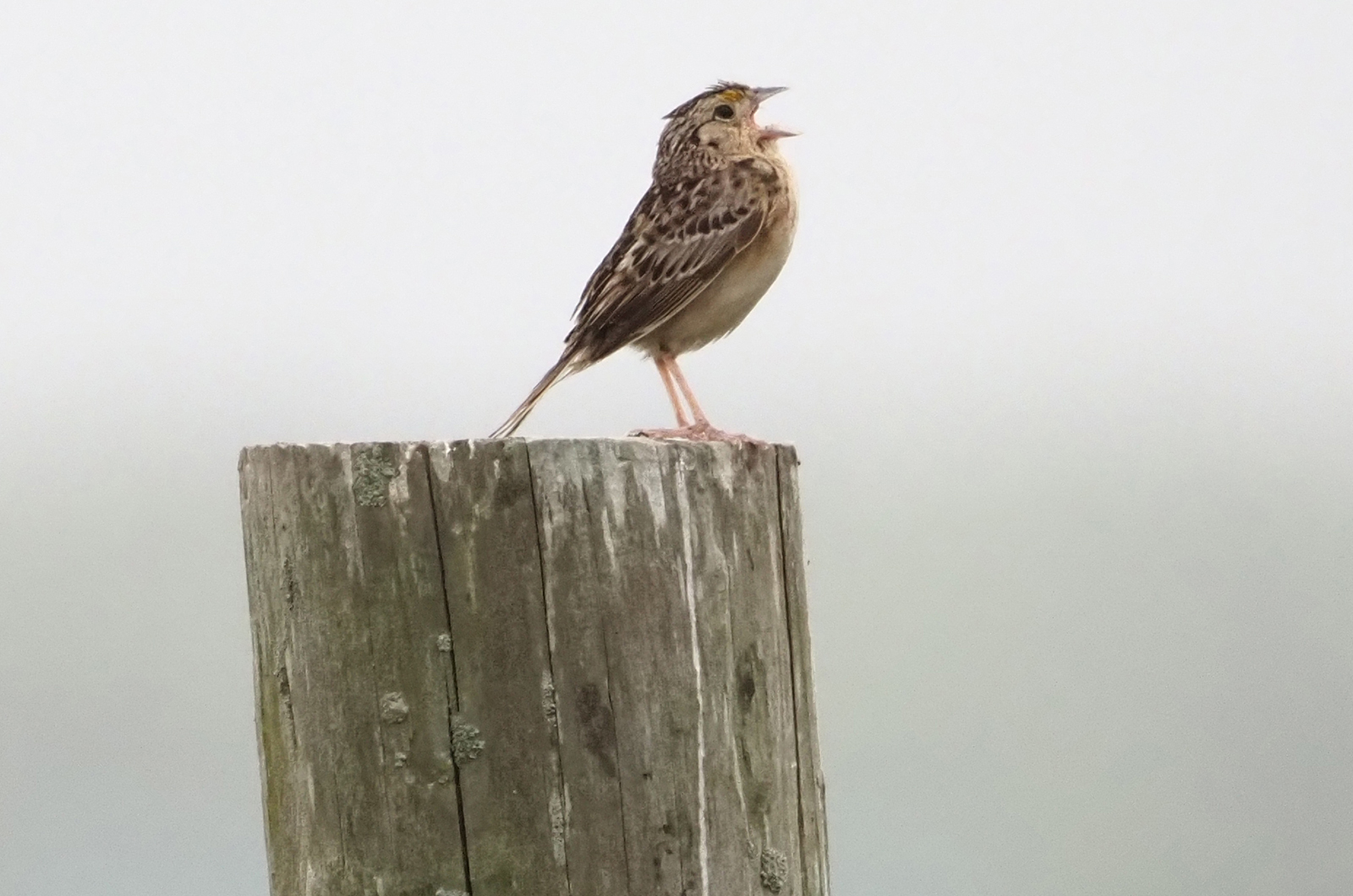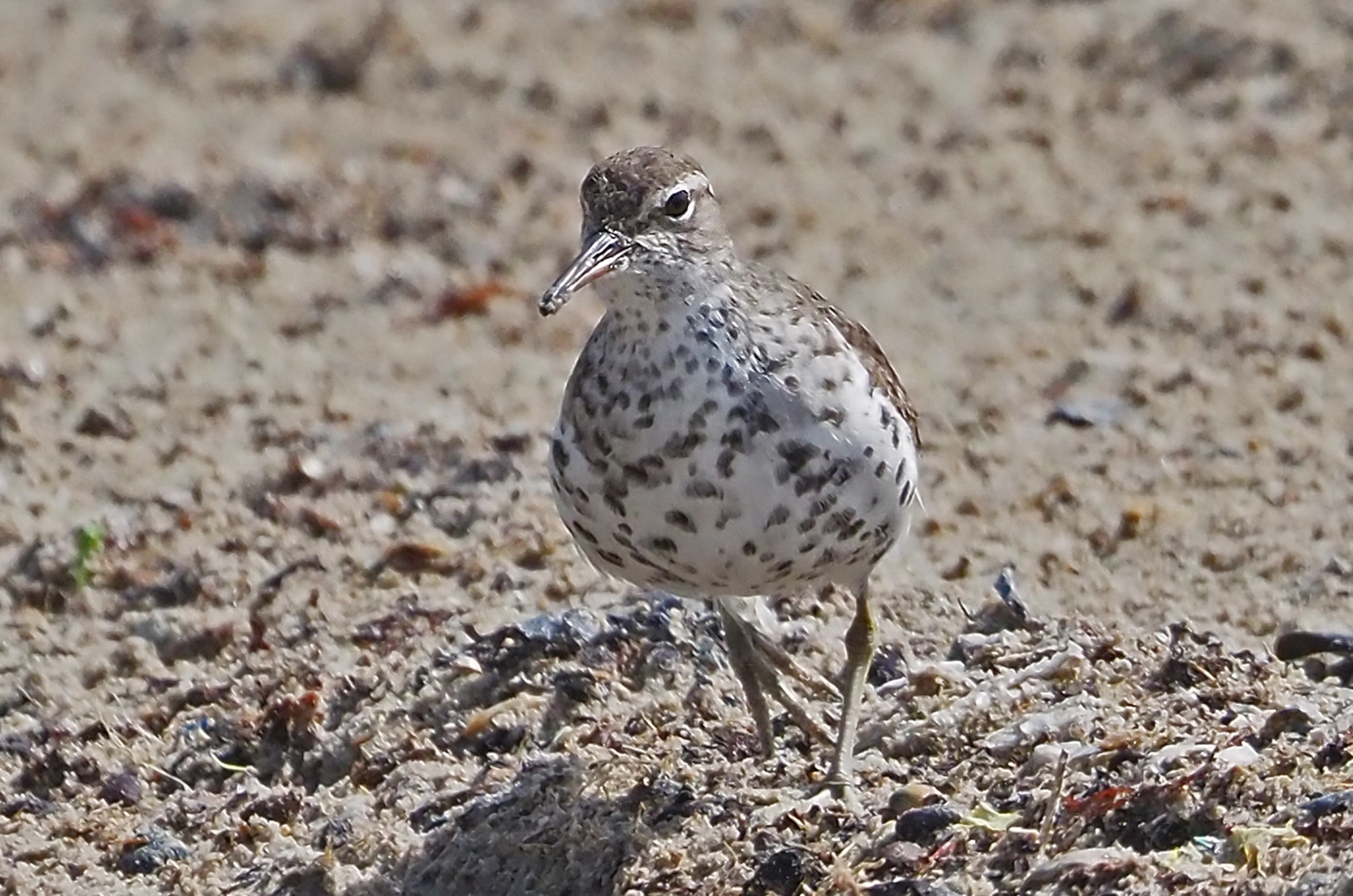A fork-tailed flycatcher is not supposed to be here, as their northernmost population is in the Yucatan Peninsula of Mexico. Apparently, these birds do not see their range maps though, because they have wandered northward along the Gulf and Atlantic coasts as far north as Newfoundland. In late May, an immature was spotted in New Brunswick, and on June 22 Robert Provost III saw and photographed one at Fuller Street Beach, posting the sighting on the American Birding Association’s Rare Bird Facebook page. Sky Kardell texted about the sighting and Matt Pelikan posted it on the Vineyard Rare Bird Alert Facebook page. As far as I know, no one else has seen this vagrant. Is this the New Brunswick bird heading back south or a different bird?
This is the week for flycatchers. I spotted a least-flycatcher near Ames Pond at Cedar Tree Neck, also on June 22. Fortunately, I heard its dry che-BEC song (I have a hard time calling it a song) but voice is the only way for me to distinguish this species from the closely related and look-a-like Empidonax flycatchers. This is the second sighting of this species this spring, as Sky Kardell saw one on Cape Pogue back on April 28.
Eastern kingbirds are a fairly common breeding species in fields. Van Rowan, Bryce Thompson and Susan and Stuart Santos found one at the state forest on June 17, and Chris Scott also saw one at the state forest on June 19. My June 20 Edgartown library bird tour to Katama Farm saw two, and Hayden Stebbins observed one at Dike Bridge and two at Wasque on June 21, the same day that Chris Scott spotted two at Katama Farm and two at Felix Neck. Valerie Burdette located three along Jeffer’s Road on Chappaquiddick on June 22, and Caroline Heald discovered three at the Wakeman Center on June 24.
In the woodlands along the north shore is where eastern wood-pewees are mostly found. Chris Scott found two at Polly Hill Arboretum on June 16.
Caroline Heald had two at Pilot Hill Farm on June 18, the same day that Luanne Johnson observed one at 12 Aspen Lane in West Tisbury. Sea Williams and Bridget Dunnigan located three at Menemsha Hills, and they also spotted one at the state forest on June 22. I watched three at Cedar Tree Neck on June 22, while Caroline Heald found two at Pilot Hill on June 18 and one at the Wakeman Center on June 24.
Great crested flycatchers are found Island-wide and are perhaps the most abundant flycatcher on the Island. Bryce Thompson, Van Rowan and William Hamson spotted two in the state forest on June 17, as well as three field sparrows and 12 bluebirds including fledglings. Sea Williams and Bridget Dunnigan found three at Menemsha Hills on June 18 and two at the state forest on June 22, along with four red-eyed vireos and one wood thrush.
Also on that day, Jenna Albaugh located one in Makoniky and I watched two at Cedar Tree Neck. Steve Allen observed six on June 20 at Felix Neck, Christina Steinbock-Malfer observed an adult bringing food to feed chicks in its nest box in Ocean Heights on June 23, Alain Beauchamp identified one at the Gay Head Cliffs on June 24, Clifton Stone located one at Waskosim’s Rock Reservation on June 24, and Seth Buddy found four at the same location on June 25.
The sixth and last species of flycatcher reported this week is the eastern phoebe. Bryce Thompson and Van Rowan spotted one in the state forest on June 17, I heard one calling at Cedar Tree Neck on June 22, an anonymous birder found one at Waterview Farm on June 25, the same day that Seth Buddy observed two at Waskosim’s Rock Reservation. I wonder whether they are declining, as the two pairs that always nested near my Vineyard Haven house have not been present for a few years.
I spotted the first grasshopper sparrows of the season at Katama Farm on June 19, and Lanny McDowell photographed one there on June 21. Unfortunately, my Edgartown Public Library bird tour on June 20 was unable to spot them, but those 28 birders were able to spot three killdeer, one northern harrier, three tree swallows, eight barn swallows, five savannah sparrows, and one song sparrow.
A few of us then moved down to the western end of Mattakessett Bay and found one willet, two laughing gulls, three ring-billed gulls, three black skimmers and a possible black tern. I spotted a small dark tern as I scanned the tidal flats but unfortunately could not find it again to confirm the identification.
Speaking of sparrows, I went through some previous sightings and discovered that I did not mentioned the saltmarsh sparrows (a denizen of salt marshes) that Sky Kardell observed on Cape Pogue on May 19 and 25.
Also of note, Chris Scott found one bobolink at Katama Farm on June 21. Could this species be trying to nest there this year? Usually they do not show up until August on their southward migration.
Caroline Heald spotted a spotted sandpiper at Chappaquonsett on June 19. The only other sighting is from May 11, when Bridget Dunnigan and Sea Williams saw one at Crystal Lake. How come they do not breed here? They breed almost everywhere else in northern half of North America.
Here come seabirds, but we have to go offshore to see them. Matt Born saw one razorbill and one Wilson’s storm-petrel almost a mile offshore from Great Rock Bight on June 22. Also that day Charles Morano spotted four Wilson’s storm-petrels and one great shearwater in Muskeget Channel, about 10 miles south of Wasque and one Wilson’s storm-petrel, one Cory’s shearwater,and two great shearwaters about six miles south of South Beach. Shearwaters have produced quite the show, especially off Aquinnah, for the previous two Julys. Will they again this year?
Please email your sightings to birds@vineyardgazette.com.
Robert Culbert is an ecological consultant with Nature Watch living in Vineyard Haven.






Comments
Comment policy »